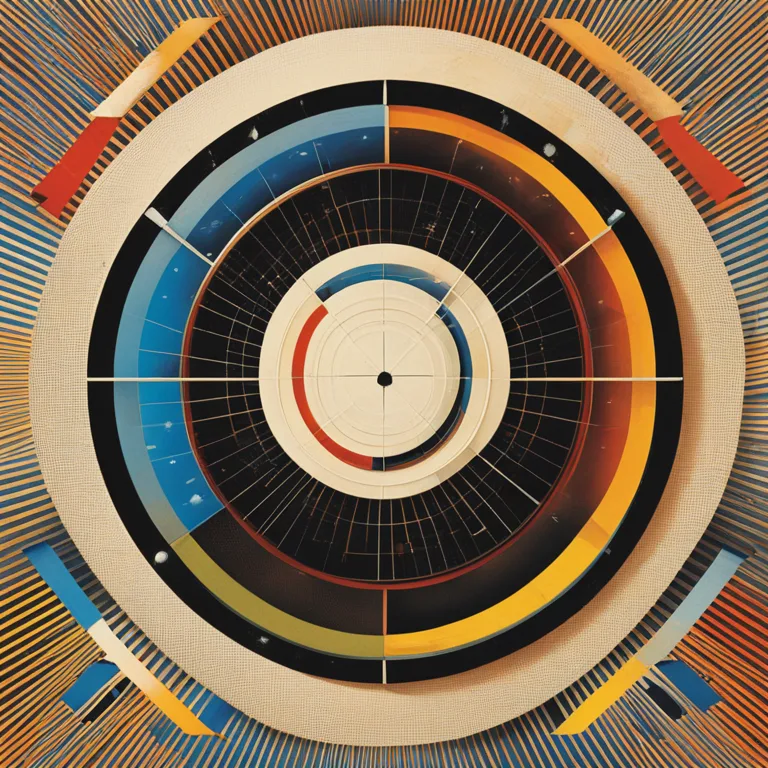
The Origins of Biorhythms: A Historical Insight
Discover the historical roots of biorhythms theory and how it has influenced modern thought on physiological and emotional cycles.
article by Adrian Wallace
The Inception of Biorhythm Theory
Biorhythms stem from a conceptual triad of life cycles postulated to affect human physical, emotional, and intellectual states. This notion posits that our daily lives are influenced by rhythmic biological cycles. Tracing its origins begins in the 19th century with the work of Dr. Wilhelm Fliess, a close associate of Sigmund Freud. Fliess theorized that human life operates in cycles and was particularly focused on a 23-day physical cycle and a 28-day emotional cycle. While his ideas were speculative for his time, they laid the groundwork for the study of biorhythms. Subsequent years saw these concepts refined and expanded upon, finding their place in the tapestry of holistic wellness practices.

Scientific Inquiry and Expansion
The scientific community's interest in these cycles grew in the 20th century. In 1923, a theory was presented by Hermann Swoboda and Alfred Teltscher, suggesting intellectual rhythms of 33 days. Teltscher, in particular, observed consistencies in his students' academic performances, which he believed correlated with these cycles. Despite their findings, biorhythms remained primarily in the realm of theoretical models, with limited empirical research to support the assertions fully. However, the appeal of predictable patterns in human behavior and capabilities continued to capture the imagination of many. By the latter half of the century, biorhythms had begun to permeate the spheres of self-help and personal development literature.

Biorhythms in the Digital Age
The advent of digital technology has rejuvenated interest in biorhythms, facilitating personal tracking and analysis. A myriad of applications and software now offer tools to calculate and predict one's biorhythmic cycles, aligning them with activities that best suit their current state. Skeptics argue that personal experiences are highly subjective and complex, making correlations with such cycles tenuous at best. Nonetheless, the digitalization of biorhythm calculation has introduced this concept to a broader audience, making it more accessible than ever and sparking renewed dialogue on its efficacy and practical application.

The Skepticism and Controversy
Despite the surge in popularity, biorhythms have also faced significant skepticism from the scientific community. Critics point to the lack of rigorous, repeatable studies that quantifiably demonstrate the influence of these proposed cycles. The field of chronobiology has acknowledged the existence of various biological rhythms, such as circadian rhythms, but these are generally seen as distinct from the specific cycles biorhythm theory advocates. As a result, biorhythms often find themselves classified under pseudoscience, with many urging caution to those eager to apply such concepts without critical examination.

Cultural Impact and Modern Implications
Regardless of debate, biorhythms have made a noticeable impact on cultural practices. Certain industries, particularly those related to wellness and personal development, have embraced biorhythms as a tool for optimizing performance. With a growing societal focus on wellbeing, the narrative of syncing personal endeavors with biological rhythms holds particular allure. Going forward, it seems likely that the interest in biorhythms will persist, especially as discussions about work-life balance and self-care continue to take prominence and individuals seek personalized strategies to manage their health and productivity.
Exploring Personal Cycles
For those interested in exploring their own biorhythms, there are numerous resources available. Many choose to start with simple calculations using their birth date as a point of origin, examining how their individual cycles could impact decision-making, physical activities, and emotional responses. It's a journey that invites introspection and self-discovery, albeit one that should be undertaken with an understanding of the ongoing debate surrounding its scientific validity. Whether or not biorhythms hold water, it's undeniable that they've carved out a niche in the zeitgeist, prompting further exploration of how we might better understand and navigate our personal experiences.
Published: 12/28/2023
Modified: 12/28/2023
More predictions
Come back here soon to learn more about yourself and your future


The Intricacies of Biorhythm Charts
Delve into the world of biorhythms with our concise guide on understanding biorhythm charts and how they might influence your daily life.


Biorhythm Basics: Patterns of Life's Vital Rhythms
Explore the intriguing concept of biorhythms and how they exemplify distinct cycles impacting physical, emotional, and intellectual states.


BioRythm Compatibility: Syncing Life's Rhythms Together
Discover how biorhythm compatibility can influence your personal relationships and find harmony with life's natural cycles.